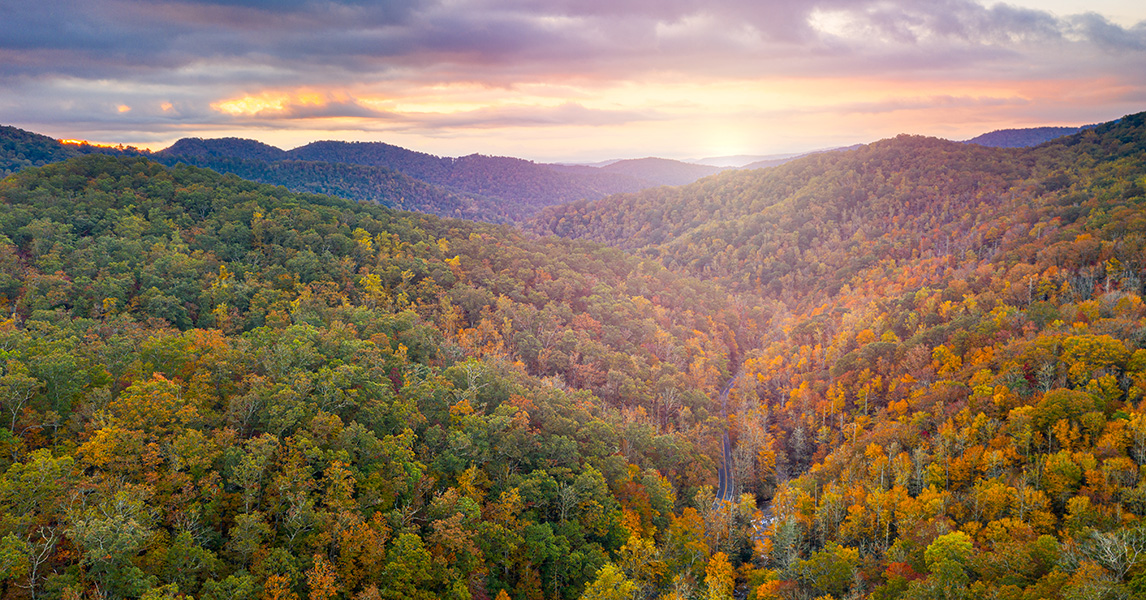As summer transitions into fall, North Carolina trees soon begin to transform into various shades of orange, yellow, red and purple.
Fall color should begin in the higher elevations of the mountains in late September and then gradually spread across the state. Color is at its strongest from mid-October in the higher mountains to mid-November in the lower Piedmont and coastal plains.
“If we have warm, sunny days and cool nights with temperatures just above freezing, the timing and color of fall leaves should be similar to those of past years,” said Robert Bardon, professor of forestry and environmental resources at North Carolina State University.
The cooler nighttime temperatures slow down the production of chlorophyll, the pigment that gives leaves their green color, allowing the carotenoid (orange) and xanthophyll (yellow) pigments to emerge from within.
At the same time, sunlight increases sugar production in the leaves, and cooler nighttime temperatures bind the sugars, creating a third pigment known as anthocyanin. Anthocyanin produces the richer reds and purples seen in fall.
The latest three-month climate forecast from the National Oceanic and Atmospheric Administration (NOAA) shows a low probability of above-average temperatures and precipitation for much of North Carolina this fall.
Higher temperatures can cause leaves to stay green longer, delaying the onset of fall color. Above-average rainfall is usually accompanied by cloudy weather, which blocks the sunlight necessary for the production of anthocyanins.
“Rainy weather would result in fewer bright reds and more yellows,” Bardon said.
In western North Carolina, where millions of people flock each year to see the fall foliage, NOAA expects an equal chance of normal, above-normal and below-normal precipitation. Some parts of the region, including the Nantahala National Forest, continue to experience mild drought.
While some trees can tolerate drier conditions and retain their foliage until fall, the leaves that do change color typically fall prematurely and appear in more muted colors than normal.
“The most vibrant foliage appears when a warm, dry summer is followed by early fall rains,” Bardon said. “Any time this pattern is disrupted, it can have an impact on the color of the leaves.”
Bardon added that tropical storms with heavy rainfall and strong winds also affect fall foliage by knocking down leaves, resulting in a shorter season.
NOAA scientists recently predicted a 90 percent chance of an above-average Atlantic hurricane season in 2024, including 4-7 major storms with winds of 111 mph (178 km/h) or more. The hurricane season ends on November 30.

